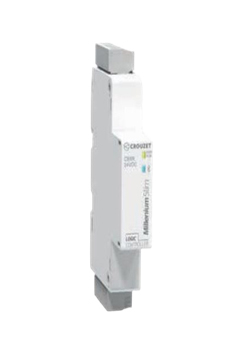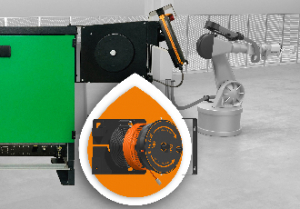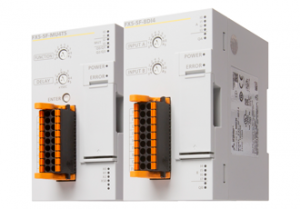Integrated Mitsubishi Electric SCADA solution drives major energy savings

To combat rising energy costs, Trelleborg’s flagship Industrial Anti-Vibration Mounts plant in Leicester, UK, has installed a Mitsubishi Electric SCADA solution with integrated MX4 Energy software to monitor and control the plant’s energy use. Since its installation the package has helped engineers to develop an energy saving strategy throughout the plant that has exceeded expectations and continues to generate savings.
The plant’s Senior Process Engineer, Mark Coote, comments:“Head office assigns us an energy reduction target each year, which keeps us on our toes. At first we could easily identify those parts of our process that were big energy users and focus on them; usually a couple of inverters on key motors paid handsome dividends.
“By 2008 we had addressed all the obvious projects, but then energy prices began to rise so quickly that our energy costs nearly doubled. We decided it was time to review the issue from first principles: was our kit showing its age? Were our control strategies adequate? What would we do differently if we were building a new greenfield site?”
An initial appraisal suggested that energy usage was higher than it needed to be, though it was difficult to pinpoint where savings could be made. Eventually it was decided that systematic monitoring should be implemented using the site’s SCADA system. Despite a bespoke SCADA system being installed when the plant was built, it was felt that, given technological advances, a new system may provide greater energy monitoring so experts from Mitsubishi Electric were called in to advise.
It was soon realised that the pace of development of digital technologies since the plant was built meant that a new standard Mitsubishi MX4 SCADA package would serve Trelleborg far better than their original bespoke system; this meant that MX4 Energy, an automatic monitoring and targeting (aM&T) solution, could be integrated into the system at the same time.
Mark continues: “Despite initial concerns over disruption to production during the switchover, we were able to work out a schedule that spread the installation over about eight weeks. In the end our production levels weren’t affected at all.”
The MX4 solution logs energy usage at all points throughout the site; on the production floor; and also in offices, labs and stores etc. It automatically analyses the data and produces clear, concise reports on where the most energy is being used. From these it was simple to prioritise activities that produced the best saving, were easy to do, or had useful consequential effects.
For instance, one of the first things the MX4 solution highlighted was that the space heat bill for the offices was higher than expected as Mark explains: “We were running the heating all day and throughout the weekend. It wasn’t rocket science to reset the timers; switching off at about 3pm during the week and only having trickle heating on over the weekend.”
Several new pieces of control equipment were installed, including a high performance PLC for strategic control, A1S controller modules for local control, FR-F740 variable speed drives to optimise several motors, I-Cube meters for monitoring power consumption at key points, and an E-series HMI to give a visual representation of the plant and instant resetting of parameters. All this is integrated into one co-ordinated system using a CC-Link communications network and associated remote I/O modules.
In overview, the MX4 SCADA controls the production machines, while the MX4 Energy is used to monitor and target energy sources to drive cost saving on energy procurement. Additionally I-Cube meters monitor some individual machines to allow changes to be analysed quickly. A feature of MX4 Energy is the Scheduler, which sends Mark a daily e-mail with energy consumption figures for the previous day’s operations.
Upon installation the system was able to identify areas for improvement immediately, including the plant’s lighting. Industrial buildings have high ceilings and it is easy to forget the powerful lighting they require; this is easily resolved by switching to new, low energy lighting techniques. The production floor also identified many opportunities for energy saving including conveyors running when empty, better management of heat based processes and optimising control of various specialist machines.
Mark concludes: “We set ourselves an initial target of a 5% reduction in energy consumption, and were delighted that we immediately achieved nearer 6%. This gave us a payback of less than 18 months, plus the tools to go on reducing energy well into the future.
“I now receive a daily e-mail; it allows me to review the energy situation regularly and highlights any anomalies, such as machines or lighting being left on overnight. We continue to find new energy savings, and there are also consequential savings that are proving to be really significant. For instance we used to run a regular Sunday night shift to get ready for the next week’s production; this is no longer necessary and we have even been able to cut back on Saturday maintenance shifts.”
Similar articles
More from Mitsubishi
- Want a robot but don’t know where to start? 11th June 2021
- A pizza challenge for Control Freaks 22nd April 2021
- Competitive factories need to leverage the power of data 15th April 2021
- Combining user-friendliness with high performance 16th March 2021












Write a comment
No comments